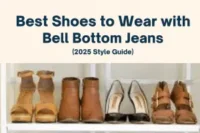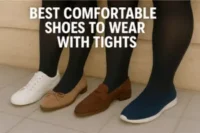What is a Fashion Trend? A Complete Beginner’s Guide (2025)
Published: 5 May 2025
A fashion trend is more than just a passing style—it’s a reflection of culture, society, and self-expression. In its simplest form, a fashion trend refers to a popular style or look that gains momentum over time and is embraced by a large number of people. These trends often originate from runways, celebrity outfits, street style, or social media platforms like Instagram and TikTok. As we step into 2025, fashion trends are evolving faster than ever, driven by digital innovation, global influencers, and shifting consumer values such as sustainability, gender fluidity, and individuality. From bold prints and futuristic materials to nostalgic revivals like Y2K and ’90s minimalism, trends shape the way we dress and express ourselves in everyday life. For beginners, understanding fashion trends isn’t just about following what’s in style—it’s about learning how the industry works, recognizing patterns in design, and discovering how to blend personal taste with the broader fashion narrative. Whether you’re exploring fashion for fun or considering a career in the industry, this guide will help you decode the world of trends and stay confidently stylish in 2025.
What is a Fashion Trend?
A fashion trend is a style or look that becomes popular within a specific period. It can involve clothing, shoes, accessories, or even hairstyles. Fashion trends shift every season or year, influenced by changes in society, culture, and technology. They serve as a way for individuals to express their personal style and align with what is “in” at the moment.
The importance of fashion trends goes beyond just looking stylish. They are deeply tied to cultural movements and often reflect societal values. For instance, trends such as sustainability and ethical fashion have Expanded rapidly in recent years, as consumers become More aware of how their buying choices affect the environment.
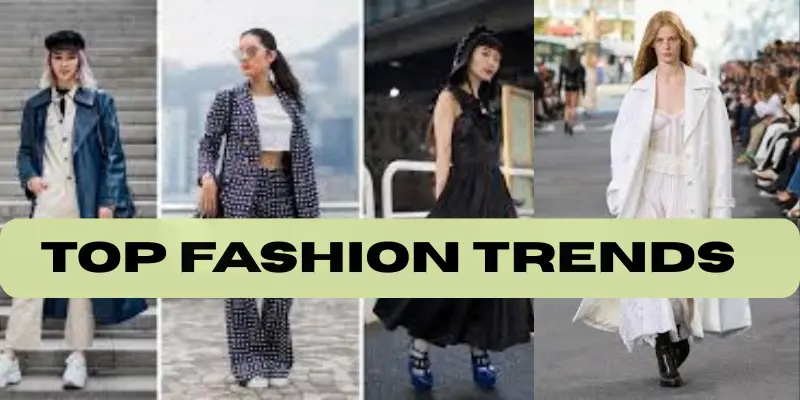
Fashion trends also Have a key impact on the global stage market, driving the fashion industry, and influencing what people wear around the world. The rise of social platforms has brought influencers into the spotlight. and fashion shows, trends spread rapidly, reaching millions of people almost instantly. Whether it’s a new color, a particular fabric, or a unique accessory, keeping up with trends allows people to stay connected with current styles and express their evolving identity.
The Evolution of Fashion Trends
Fashion trends have been an essential part of human culture for centuries, evolving in response to changes in society, economy, and technology. The concept of “trend” began as a way to distinguish the upper class from the masses, but over time, trends became more accessible to all people, allowing everyone to participate in shaping fashion.
Historical Context
In the early 20th century, fashion was dictated by high-end designers and couture houses, who created exclusive pieces for the rich and famous. The public would follow these styles, emulating the looks of celebrities and royalty. Fashion houses like Chanel, Dior, and Yves Saint Laurent led the way, setting trends that lasted for decades.
However, as we moved into the mid-1900s, fashion became more democratic. Designers began creating ready-to-wear collections, making styles accessible to a wider range of people. This period saw the rise of youth-centric trends, especially in the 1960s and 1970s, when the hippie movement influenced clothing with bohemian and relaxed styles.
The Impact of Media and Celebrities
The role of media and celebrities in shaping trends grew exponentially in the 1980s and 1990s. Television, movies, and magazines showcased the latest trends, making them mainstream. Icons like Madonna, Princess Diana, and Michael Jackson became cultural figures who influenced what people wore, from athleisure to grunge.
The Rise of Fast Fashion
In the early 2000s, the advent of fast fashion revolutionized the way trends were produced and consumed. Brands like Zara, H&M, and Forever 21 brought the latest runway styles to the high street, making them affordable and quickly accessible. This shift allowed consumers to buy into trends almost instantly, leading to an acceleration of trend cycles. What was “in” one season could be out the next.
The Digital Era and Social Media
In recent years, the growing influence of platforms like Instagram has elevated social media’s role, TikTok, and YouTube has completely changed how fashion trends spread. Influencers, bloggers, and celebrities now have the power to influence global trends at a pace never seen before. Micro-trends—trends that are short-lived and often driven by a small group of people—can go viral in days or even hours.
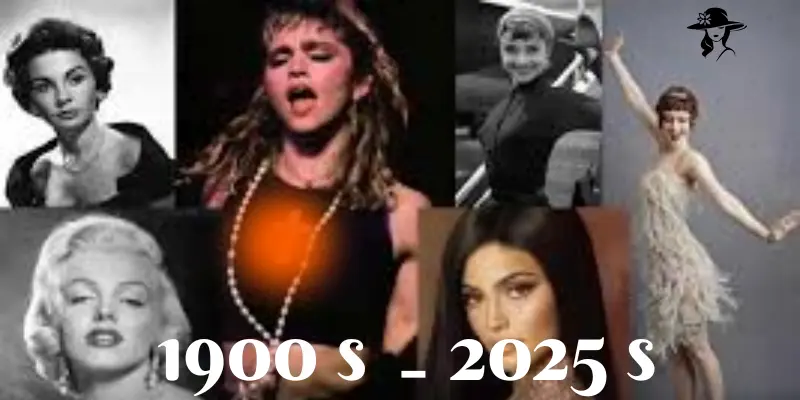
Sustainability now plays a key role in shaping fashion trends. As awareness of environmental concerns increases, more consumers are seeking out eco-conscious materials, responsible manufacturing, and slower, more thoughtful approaches to fashion. This marks a move away from the throwaway culture of fast fashion.
Types of Fashion Trends
Fashion trends can be categorized in various ways depending on their popularity, lifespan, and influence. Understanding the types of trends helps people identify which ones resonate with their personal style and which ones are fleeting. Below are some of the most common types of fashion trends:
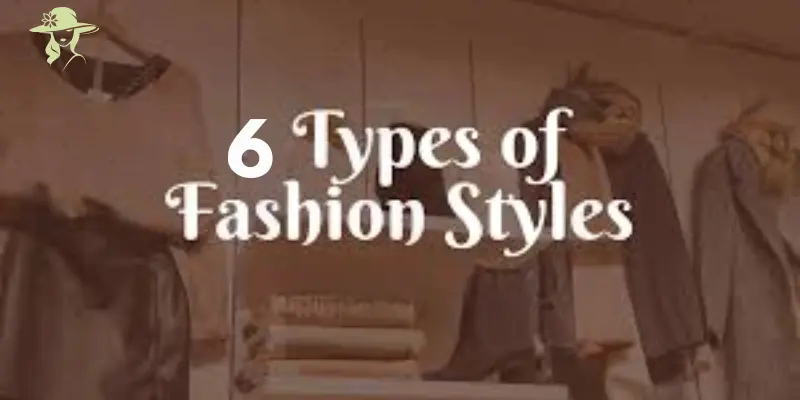
1. Seasonal Trends
These trends are directly tied to the seasons of the year. Spring, summer, fall, and winter bring different weather conditions, which influence the types of clothing that are worn. For example, light fabrics and bright colors dominate in the summer, while heavier coats, boots, and earth tones are popular in the winter. These trends are typically short-lived and refresh annually, aligning with seasonal changes.
2. Classic Trends
Classic trends are timeless styles that never go out of fashion. These are the staples of every wardrobe, such as little black dresses, white shirts, denim jeans, and tailored blazers. Classic pieces transcend seasons and trends, offering durability and versatility. These styles are often updated with minor tweaks but remain fundamentally the same over time.
3. Micro-Trends
Micro-trends are short-lived and fleeting trends that appear suddenly and can disappear just as quickly. They typically gain popularity through social media, particularly platforms like TikTok and Instagram, and can become viral in a matter of days or weeks. Examples include specific colors, prints, or accessories that are all the rage for a brief period but fade fast as new trends take over.
4. Street Style Trends
Street style refers to the fashion that emerges from everyday people on the streets, often influenced by urban culture, music, and youth movements. This type of trend can be bold, experimental, and heavily influenced by subcultures. Sneakers, oversized clothing, and athleisure have been major street style trends, often later adopted by high fashion brands.
5. Sustainable Trends
Sustainability in fashion has become one of the most prominent trends in recent years. With increasing awareness of environmental issues, consumers are opting for eco-friendly fabrics, ethical production, and second-hand shopping. Brands are shifting towards more sustainable practices, offering collections that are both stylish and environmentally conscious. This trend is reshaping the entire fashion industry, pushing it toward a more responsible future.
6. Revival Trends
Revival trends bring back styles from the past, often from previous decades. The 1990s, for instance, have seen a resurgence with trends like flannel shirts, mom jeans, and platform shoes. Revival trends usually occur every 10–20 years as younger generations rediscover fashion from their parents’ or grandparents’ eras and incorporate them with a modern twist.
How Fashion Trends Start
Fashion trends don’t appear out of nowhere; they emerge from various influences and are shaped by multiple factors. Understanding how trends start gives insight into why certain styles gain popularity and others fade away. Below are the primary drivers behind the birth of a fashion trend:
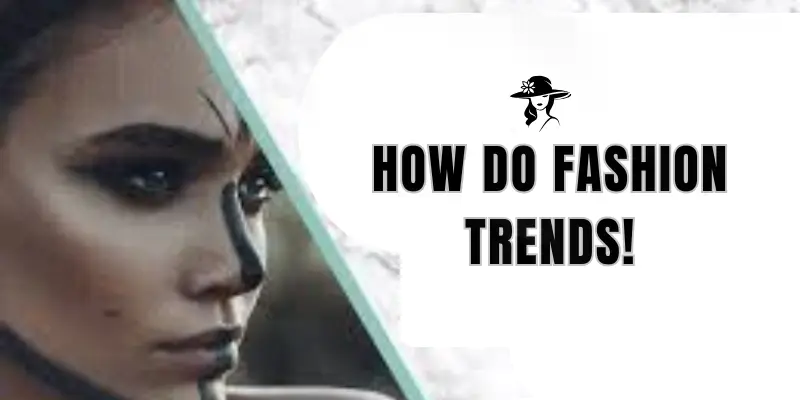
1. Fashion Shows and Runways
One of the most influential sources of fashion trends is fashion shows and runways.Designers present their latest collections at seasonal events such as New York, Paris, and Milan Fashion Weeks, influencing the direction of upcoming trends. These shows often introduce bold, innovative styles, and while not every design makes it to mainstream stores, key pieces and concepts typically trickle down into ready-to-wear collections. Runway trends serve as inspiration for what will dominate the fashion world in the coming months.
2. Celebrity Influence
Celebrities play a significant role in shaping fashion trends. When A-list actors, musicians, and social media influencers wear a particular outfit or style, it can become an overnight sensation. The influence of celebrity style extends through red carpet events, public appearances, and social media platforms like Instagram, where fans and fashion enthusiasts look to their favorite stars for style inspiration. For example, when Kim Kardashian popularized the “athleisure” look or when Rihanna brought bold streetwear fashion to the forefront, these trends quickly became mainstream.
3. Social Media and Influencers
In the digital era, social media plays a major role in shaping and spreading fashion trends. Apps such as Instagram, TikTok, and Pinterest have simplified the way people can influencers and everyday users to share their unique styles, reaching millions of people globally. Hashtags like #OOTD (Outfit of the Day) or #FashionInspo allow trends to spread rapidly. The viral nature of platforms like TikTok has made micro-trends more common, where certain outfits, challenges, or accessories take off in days or weeks.
4. Cultural and Political Movements
Fashion is often a reflection of what’s happening in society. Cultural movements, political events, and social issues can all influence the kinds of styles people embrace. For instance, the rise of feminism and gender fluidity has led to the popularity of gender-neutral fashion, while eco-consciousness has sparked the growth of sustainable fashion trends. Similarly, political movements or moments of unrest often lead to the emergence of certain clothing styles, like the punk rock aesthetic, which was tied to the anti-establishment movement in the 1970s.
5. Innovation in Fabric and Technology
Advancements in fabric technology and textile innovation also play a key role in the emergence of new trends. New materials—like performance fabrics used in activewear or smart textiles—can redefine how fashion is worn and used. 3D printing and wearable technology are reshaping the fashion industry by allowing designers to experiment with futuristic designs, making it possible for entirely new styles and trends to emerge.
6. Street Culture and Youth Movements
Often, fashion trends start within youth cultures or street movements. Music genres like hip hop, punk, and grunge have all influenced street fashion, which then transcended into the mainstream. Youth movements, characterized by their unique approaches to clothing, reflect individualism and rebellion, often sparking new trends in the process.
The Impact of Fashion Trends
Fashion trends go beyond mere aesthetics. They shape cultures, economies, and individual identities. From influencing global economies to altering how people express themselves, fashion trends have a far-reaching impact on both personal and societal levels. Here’s a look at how fashion trends influence various aspects of life:
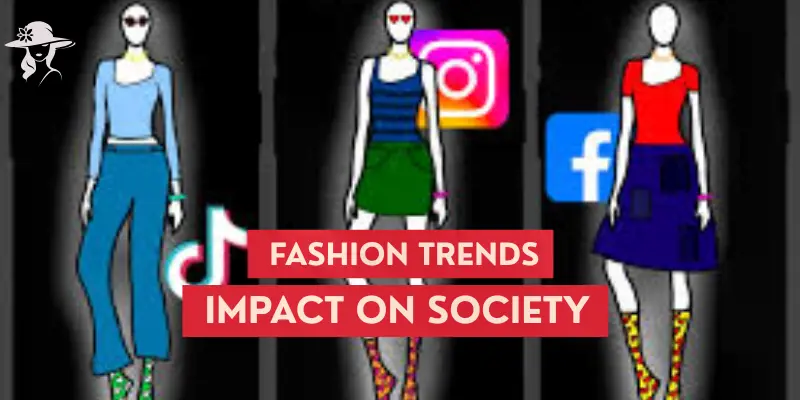
1. Economic Impact
Fashion trends have a profound effect on the global economy, especially in the apparel industry. As trends change, brands and retailers quickly adapt to meet the demands of consumers. This cycle creates a fast-paced economy, where companies rely on constant product turnover to maintain profits. Additionally, the rise of fast fashion has made it possible for brands to churn out affordable, trendy pieces at an accelerated rate. While this fuels the economy, it also has environmental consequences, leading to an increasing demand for more sustainable practices in fashion.
2. Cultural and Social Influence
Fashion trends reflect the cultural and social climate of a particular time. For example, during the 1960s, the rise of the hippie movement introduced boho styles, which were associated with peace, love, and countercultural values. Today, we see fashion trends aligning with movements like feminism, sustainability, and social justice. Fashion can also be a form of protest—for instance, the black berets worn by civil rights activists in the 1960s became symbols of resistance.
In modern times, social media plays a critical role in shaping how these movements express themselves through fashion, allowing people to share their ideas and make statements through clothing. Fashion can empower individuals to showcase their identity, culture, or political stance through the pieces they wear.
3. Personal Identity and Expression
Fashion is often viewed as a tool for self-expression. People use fashion trends to reflect their unique personality, status, and beliefs. Whether it’s a particular color palette, a specific type of footwear, or an accessory, trends offer a way for individuals to express their style. Over time, these trends help to define a person’s social identity within a particular group, whether it’s the athleisure look, minimalist style, or vintage fashion.
Fashion can also be a reflection of cultural heritage, allowing people to incorporate traditional clothing styles into modern looks, preserving their cultural identity while keeping up with contemporary trends.
4. Environmental Impact
Fashion trends, especially those driven by fast fashion, have raised concerns about the industry’s effect on the environment. The mass production of clothing often leads to waste, pollution, and the depletion of natural resources. As a result, there’s a growing push for more sustainable fashion trends, such as upcycling, eco-friendly fabrics, and slow fashion, which focus on creating long-lasting, environmentally responsible products.
Moreover, consumers are becoming more mindful of the carbon footprint of their clothing choices, favoring brands that prioritize ethical production and sustainability. This shift is encouraging the fashion industry to rethink how trends are created and consumed.
5. Influence on Other Industries
Fashion trends influence many other industries, including music, film, technology, and art. Musicians, actors, and influencers often set the stage for new trends, and their choices of clothing are widely covered in the media. In the tech industry, innovations in fabric technology, like the development of smart fabrics or wearable tech, are becoming integral to fashion design. As technology and fashion continue to merge, trends like 3D-printed clothing and fashion-related apps are changing how people interact with fashion.
The Future of Fashion Trends
The fashion industry is continuously evolving, driven by technological advancements, cultural shifts, and environmental concerns. As we look toward the future, several key factors will influence the direction of fashion trends in the coming years. Here’s a glimpse of what to expect:
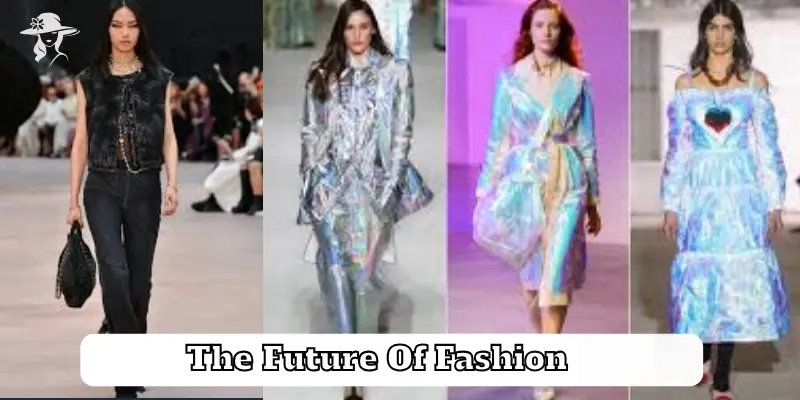
1. Technology and Innovation
One of the most significant drivers of future fashion trends is technology. Innovations in textile production and wearable technology are already beginning to revolutionize the way we think about clothing. Smart fabrics, which can monitor health data or adjust to environmental changes, will become more prevalent. We might see clothes that change color, adapt to temperature, or even track vital signs.
3D printing is also expected to reshape the industry by enabling designers to produce intricate, customized outfits made with as little waste as possible. As AI (artificial intelligence) becomes more integrated into design processes, it will enable designers to predict trends, create unique clothing items, and enhance sustainability efforts by reducing overproduction.
2. Sustainability and Ethical Fashion
As environmental concerns continue to grow, sustainable fashion will likely be at the forefront of future trends. A growing number of shoppers are looking for brands that focus on ethical production and eco-friendly materials, and this demand will only increase. Brands are expected to focus on creating long-lasting, durable products that can be repaired and reused, rather than relying on disposable fashion.
In addition, the rise of circular fashion—a system where garments are reused, repaired, or recycled—will become more mainstream. This shift will challenge the traditional linear fashion model of producing, using, and discarding. We may also see the growth of second-hand shopping and clothing rentals as people move away from constantly buying new items.
3. Personalization and Customization
In the future, fashion will likely become even more personalized, as consumers demand custom-made or tailored garments that reflect their unique preferences. Advances in technology, such as AI-powered design tools and customization platforms, will make it easier for people to create their own clothing or alter existing items to suit their style. This trend will allow for more diverse representations of body types and personal tastes, moving away from mass-produced, one-size-fits-all trends.
4. Gender-Neutral Fashion
The push for gender fluidity will continue to shape the future of fashion trends. We are already seeing a rise in gender-neutral clothing that challenges traditional gender norms. Designers will likely create more unisex styles, offering clothing options that cater to a wide range of body types and identities. This will make fashion more inclusive and accessible for people of all genders, focusing on comfort and self-expression over conformity.
5. Digital Fashion and Virtual Clothing
With the ongoing advancement of virtual reality (VR) and augmented reality (AR) technologie, the concept of digital fashion will become increasingly prominent. Virtual clothing and accessories, designed for online avatars or social media platforms, will become a part of mainstream fashion. These digital items, that have no presence in the real, physical world, offer the chance for endless customization and have the potential to reduce the environmental impact of traditional fashion production.
6. Influencers and Social Media Trends
Social media will continue to shape fashion trends, but the role of influencers may evolve. With the rise of AI-generated influencers and virtual influencers, fashion brands will explore new ways to market trends through digital personas. This will create exciting opportunities for virtual fashion shows, digital styling, and even augmented shopping experiences, where consumers can try on clothes virtually before making a purchase.
Conclusion
Fashion trends are an exciting and ever-evolving aspect of the fashion industry, influenced by a mix of cultural, social, technological, and environmental factors. From the glitz of the runways to the power of social media, trends reflect the values, concerns, and desires of society at any given time. As we move into the future, the landscape of fashion will continue to be shaped by advancements in technology, sustainability, and inclusivity.
The impact of fashion trends is not limited to aesthetics; they influence the global economy, personal identities, and cultural movements. As consumers become more conscious of their choices, sustainable fashion is poised to become the norm, encouraging more ethical practices within the industry. The rise of personalization, gender-neutral fashion, and virtual clothing shows how fashion is moving towards being more inclusive and adaptable to the needs of individuals.
The future of fashion trends is exciting, with more focus on technology, sustainability, and self-expression. With the ever-growing role of digital platforms, we can expect even faster-paced trends and increased interaction with fashion, whether through virtual experiences or AI-powered designs. As fashion evolves, it continues to serve as a strong medium for individual expression and social reflection.
By staying informed about trends and incorporating them thoughtfully into your wardrobe, you can keep up with the fashion world while expressing your unique sense of style.
FAQs About Fashion Trends
To help you better understand fashion trends and their impact, here are some frequently asked questions that cover various aspects of the topic.
Fashion refers to the overall style or aesthetic of clothing and accessories that is popular within a particular period. A trend, on the other hand, is a specific style or item that gains popularity for a short period and is often tied to seasonality or cultural shifts. While fashion can be timeless, trends tend to be more temporary.
Fashion trends can last anywhere from a few months to several years, depending on the type of trend. Seasonal trends last for a few months, while classic trends can last for decades. Micro-trends, on the other hand, might last only weeks or even days due to the fast-paced nature of social media.
Fashion trends often start on the runways during fashion weeks, where designers showcase their collections. These trends may be adopted by celebrities and influencers, who popularize them on social media platforms like Instagram and TikTok. Additionally, trends can emerge from street style, cultural movements, or technological innovations.
To stay updated with fashion trends, you can follow fashion magazines, runway shows, and social media influencers who are known for their style. Subscribing to fashion blogs or using platforms like Pinterest can also help you stay on top of emerging trends. Keep in mind that it’s important to interpret trends in a way that suits your personal style.
Yes, sustainable fashion trends are making a significant impact on the industry. As consumers demand eco-friendly and ethically produced clothing, many brands are shifting towards more sustainable practices, such as using recycled fabrics, promoting slow fashion, and offering second-hand or rental options. These changes are helping reduce the negative environmental impact of fashion.
Some of the key trends currently popular include athleisure, oversized fits, gender-neutral clothing, and sustainable fashion. Additionally, trends like vintage fashion, bold prints, and bright colors are making waves in 2025.
Yes! Many fashion trends are cyclical, meaning they are revived every few decades. For example, 1990s fashion has made a comeback with baggy jeans, flannel shirts, and platform shoes. Fashion designers often look to past decades for inspiration, making it common to see styles from the past re-emerging with a modern twist.
Social media platforms like Instagram, TikTok, and Pinterest play a significant role in spreading fashion trends. Influencers and celebrities frequently showcase their outfits, and through hashtags and viral content, specific items or styles can quickly gain popularity. Social media has made fashion more accessible, allowing anyone to influence trends, not just designers and celebrities.

- Be Respectful
- Stay Relevant
- Stay Positive
- True Feedback
- Encourage Discussion
- Avoid Spamming
- No Fake News
- Don't Copy-Paste
- No Personal Attacks



- Be Respectful
- Stay Relevant
- Stay Positive
- True Feedback
- Encourage Discussion
- Avoid Spamming
- No Fake News
- Don't Copy-Paste
- No Personal Attacks


